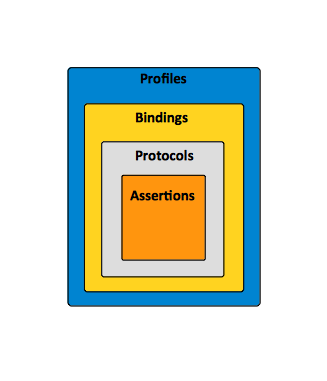SAML Concepts
Internal
Security Assertion
Subject
Subjects are entities that have identity related information specific to a security domain.
Security Domain
Identity Provider
The Identity Provider (IdP) is.
The Identity Provider is also known as the asserting party.
Service Provider
The Service Provider (SP) is ....
The Service Provider is also known as the relying party.
Trust Relationship
There is a trust relationship between the Identity Provider and and the Service Provider.
Token
A SAML token is a type of token issued by a STS/IdP that can be used to enable SSO. A relying resource secured by SAML will redirect users to SAML identity provider to obtain a valid SAML token before authenticating and authorizing the user.
SAML Use Cases
Web Browser Single Sign-On
Web browser single sign-on (SSO) among independent but cooperating parties is the most important SAML use case. Another more recent approach to addressing browser SSO is the OpenID Connect protocol.
Attribute-based Authorization
Identity Federation
WS-Security
SAML Profile
A profile is essentially a use case for SAML. If that is true, map to use cases above and coalesce. The profile combines assertions, protocols and bindings to support a specific use case.
SAML Binding
Mapping of SAML protocols onto standard messaging and communication protocols.
SAML Protocol
Requests and responses for obtaining assertions and doing identity management.
SAML Assertion
Authentication, attribute and entitlement information.
Authentication Context
Detailed data on types and strengths of Authentication.
Metadata
Configuration data for identity and service providers.
To Deplete
- https://home.feodorov.com:9443/wiki/Wiki.jsp?page=SingleSignOn
- https://home.feodorov.com:9443/wiki/Wiki.jsp?page=PicketLinkSAMLSSO#section-PicketLinkSAMLSSO-Concepts
